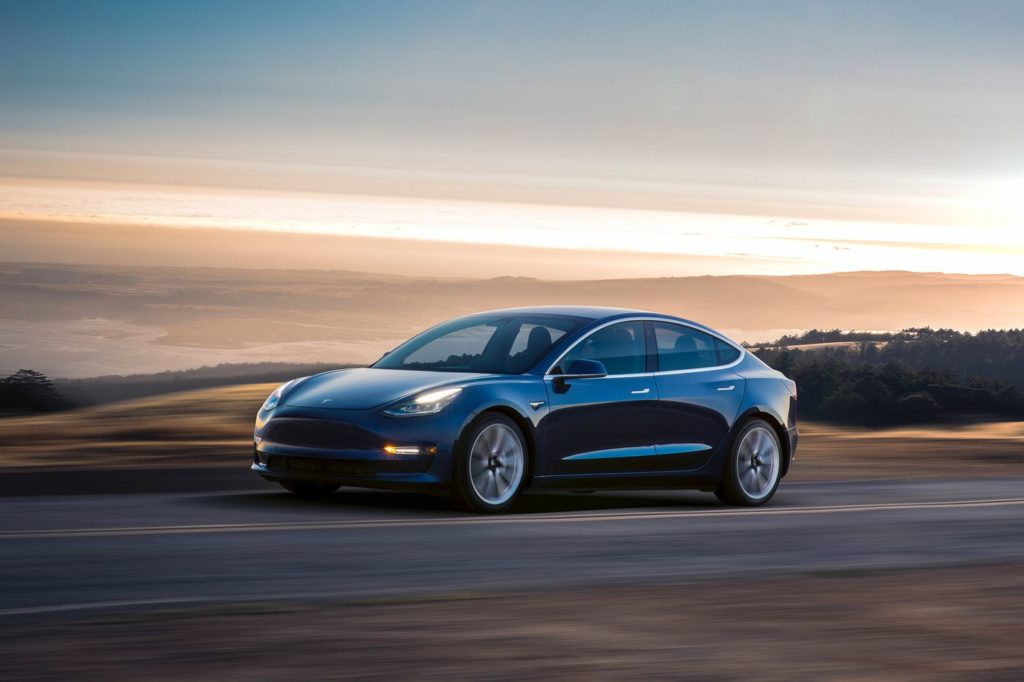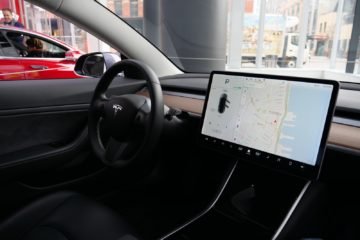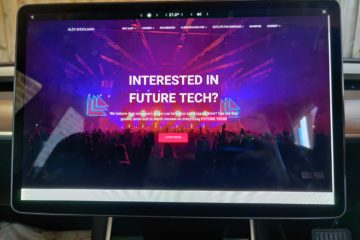Current ride sharing platform such as Didi, Lyft or Uber benefit from what’s called network effects. The network effect is when a platform or network becomes more useful and valuable as more users join it. A typical example of this is most chat applications. As more and more of your friends and family join the same app, the more useful that app/platform becomes to all of you.
Similarly, when more drivers and riders join ride sharing networks like Uber or Lyft, the more useful it becomes to everyone involved in the network. The drivers get more riders to drive around and make more money from at more times or places, and the riders get more drivers leading to shorter wait times.
This then leads to more drivers signing up (as Uber or Lyft now has more riders) and more riders joining as there’s now more drivers and shorter wait times versus other platforms. This feedback loop rockets the specific platform or application to essentially dominate and take over the entire market in what’s referred to as a winner-take-all situation.
The network effect is incredibly powerful and normally leads to one or at most three companies or apps having near 100% of that specific market. This then leads to sky high revenues and the accompanying sky high company valuations. As such, deep pocketed companies and investors can spend what might initially seem to be stupid amounts of money bootstrapping this end result.
Monopoly or Duopoly?

In this ride sharing situation you have essentially one or maybe two huge companies taking up basically all of the market share. In a local market like say Sydney, Australia it’s easy to assume they’d just charge riders whatever they wanted.
Thankfully the drivers and riders are fickle and will quickly switch to the other smaller platforms (or more old fashioned “taxis”) if a company like Uber or Lyft ever really tried to hugely hike the prices. Riders would also likely just not ride as often or take public transport.
As there’s usually two or three total companies in each local ride sharing market this still also keeps the companies in check as none want to lose their dominate position.
If one platform raises the fee it charges drivers the other can lower it, which will slowly draw drivers away from one platform onto the other. If the drivers have both apps on their phone they might preference the lower fee job over the other. This leads to longer wait times for the riders and a net drop in value of that platforms “value”.
These complex and intertwined dynamics of ride sharing are usually localised to each geographical market such as Sydney or Paris. This is in contrast to something like WhatsApp which has a global scale that it competes on with other chat apps.
Ride Sharing vs Robotaxi Dynamics

Ride sharing networks like Uber and Lyft will soon be transitioning over to robotaxis or Transport as a Service (TaaS) platforms. This will be a fundamental change that is going to cause a serious shitstorm across dozens of industries as we’ve discussed before.
However looking at just the ride sharing dynamics today what can we expect to happen? On the surface one might just see the driver being removed and everything else staying the same. However taking this key part out of what is a dynamic and ever balancing system actually throws the entire system off kilter. This is because currently with drivers and riders in a network it’s very difficult for new entrants to get a foot hold.
Drivers need Riders to drive around and make money.
Riders need Drivers to get short pickup times and lots of options.
Chicken meet egg!
As mentioned before bootstrapping this type of network is notoriously difficult and requires you to essentially advertise and spur interest in two “products” simultaneously, both growing at the exact same rate. It’s a rough balancing act and is why, once embedded, it’s very hard for competition to take down an Uber or Lyft in their dominant localised areas.
When it comes to autonomous electric vehicles (or self driving cars or robotaxis or TaaS or whatever you wish to call them) things change drastically. You no longer have a chicken and egg problem. You simply have one side of the equation (Riders) that you need to satisfy.
As such, any company or investor that’s big enough can just purchase 10,000 robotoaxis, setup a headquarters in the city and deploy them en mass. Instantly you have a fully functioning network that is there 24/7/365 to service all the Riders in that city.
At any point in time, even if one company “owns” that city, another company or investor can come along and do the exact same thing. They can also undercut the original company and as such, competition should be absolutely cut throat when it comes to TaaS.
Abundant Transport

As more and more companies deploy their own TaaS networks this will constantly drive the prices down. As the technology gets better and cheaper prices will continue to reduce too. If these companies don’t continue to reduce their prices, someone else will just insta-deploy their own network of thousands of robotaxis and undercut them.
This will push transport in general to become abundant, cheap and in some cases even free. Costs of autonomous electric vehicles will start at being about 10x cheaper than current ride sharing costs and go down from there. At that starting price it already brings it into the realm of being ad supported or sponsored by advertising.
Maybe Coles pays for your ride to/from home if you spend more than $25 at their shop. Perhaps you can get a 5 km trip for free if you agree to watch a 1 minute long ad first. You’ll also no doubt start to see TaaS companies try to build their networks into multi-product platforms with high margin add-ons or extras to be purchased.
As the money for these companies won’t really be made by driving you around anymore (as the competition for it will be so fierce) they’ll up sell you while you’re en route. Maybe you buy a Coke or pack of chips in the car on your way. Perhaps you pay for WiFi or a phone charge or maybe you want to watch a movie. Uber might offer 25% off your ride if you also pickup something from their UberEats on the way.
The options are endless but at the heart of it all will be the underlying transport of people. This transport will be seen eventually as a commodity that other (profitable) things can be added onto. For example supermarkets don’t usually make much off things like bread or milk, but these commodity items are required to get you into their store so they can make money selling you higher margin items. The same thing will apply for TaaS networks.
There will also be specialised networks for business to business services like moving packages or goods. It’s also possible that when normal consumer focused robotaxis aren’t being used by people they’ll default back to picking up packages for businesses.
How Will All This Affect You?

Obviously the huge reduction in transportation costs will be fantastic and more importantly, ongoing. It won’t just be a one time saving but a new normal, that means the thousands you spend on buying a car, insuring it, repairing it, maintaining it, fuelling it and so on will all be reduced.
Obviously many TaaS trips won’t be completely free (unless they’re ad supported as noted) but they will be drastically cheaper. How cheap? I go through a few rough estimates in this piece but essentially it will save you thousands of dollars every year.
If you’re unable to drive for whatever reason (too old, too young, blind, deaf or other sicknesses) you’ll get a huge amount of freedom back. For parents you can have your kids picked up from many places safely and easily without having to be there. The list goes on.
I go into more detail in this piece but the effects will be profound and wide reaching causing both great things and companies/industries to go bankrupt. It will be, I think, one of the biggest world wide transitions on par with the computer and the Internet. Navigating it all and coming out the other side more profitable will be impossible if you’re not aware of it which is why I started this website. To teach about the amazing future tech that’s soon to come online.
So if you’ve enjoyed this piece please share it with your friends/family/coworkers so I can continue to help everyone navigate these massive transitions. Also do you think the dynamics will be different somehow? If so share your opinion and let us know in the comments below!
The benefits include: 1) How to get those silky smooth videos that everyone loves to watch, even if you're new 2) How to fly your drone, from taking off to the most advanced flight modes 3) Clear outlines of how to fly with step-by-step instructional demonstrations and more 4) Why flying indoors often results in new pilots crashing their drone 5) What other great 3rd party apps are out there to get the most out of your drone 6) A huge mistake many pilots make when storing their drone in the car and how to avoid it 7) How to do all of these things whilst flying safely and within your countries laws.




